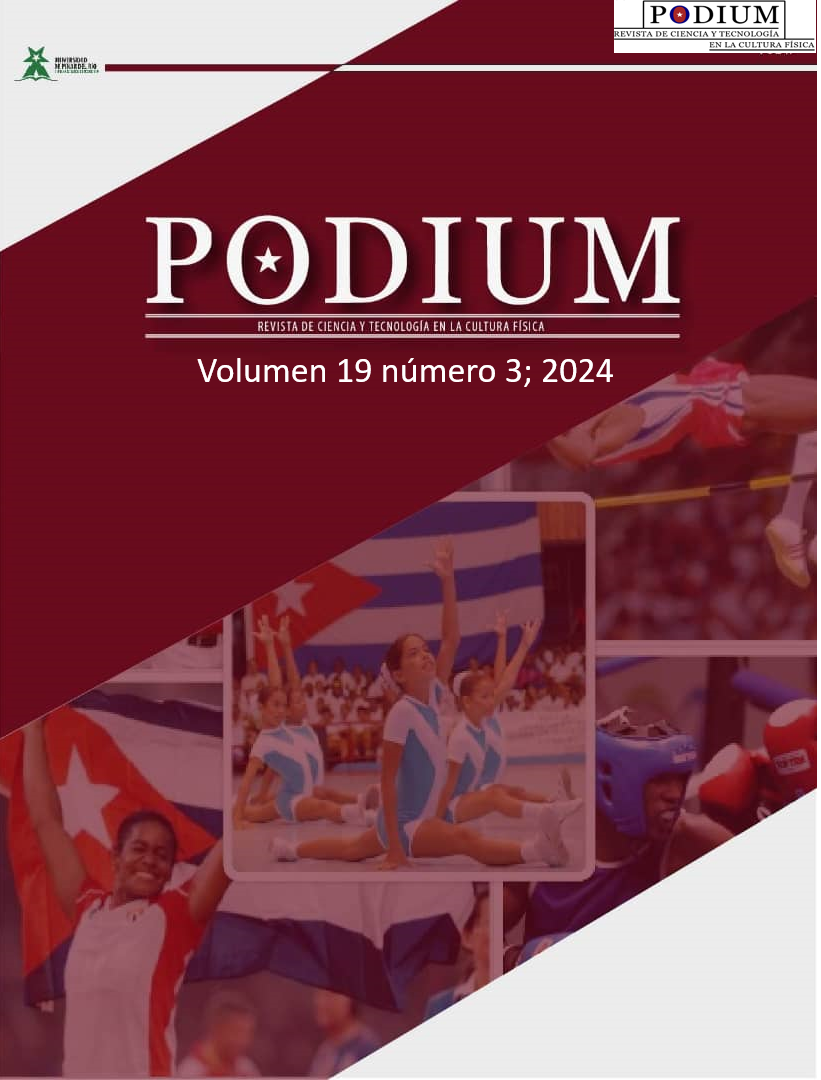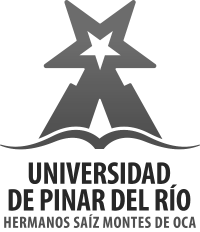Integrated Physical Rehabilitation With Stimulation Of Verbal Fluency In The Older Adult With Cardiopathe
Main Article Content
Abstract
The older adult is characterized by the changes that occur with aging in the different organs and systems, with a high incidence in functional capacity. This individual is subject to diseases and risk factors, such as: dyslipidemia, obesity, stress, cognitive impairment, arterial hypertension, ischemic heart disease, among others. The objective of the research is: to establish a group of physical exercises of the physical rehabilitation program integrated with cognitive actions for the stimulation of verbal fluency in older adults with heart disease in the maintenance phase, because this age group is more prone to cognitive impairment, and the methodological indications of the cardiovascular rehabilitation program do not include attention to cognition. The methods used were: observation, measurement, specialist criteria, follow-up of cardiovascular function by monitoring vital signs. For the evaluation, the Six-Minute Walk Test, the Minimental Test and the Semantic and Phonological Verbal Fluency Test were applied. The results obtained, after implementing the physical rehabilitation exercises with cognitive actions for the stimulation of verbal fluency, show the achievement of a significant improvement in the investigated subjects because they were able to produce more words and semantic categories, as well as to optimize the cognitive domains, attention and memory, as well as cardiovascular function and global cognition.
Downloads
Article Details

This work is licensed under a Creative Commons Attribution-NonCommercial 4.0 International License.
References
Araya Ramírez, F., Moncada Jiménez, J., & Grandjean, P. W. (2021). Improved Walk Test Performance and Blood Pressure Responses in Men and Women Completing Cardiac Rehabilitation: Implications Regarding Exercise Trainability. American Journal of Lifestyle Medicine., 15(6). https://journals.sagepub.com/doi/10.1177/1559827621995129
Barrientos Danger, M., Aguilar Rodríguez, E. M., & Del Monte Del Monte, L. (2021). Metodología para la estimulación de la memoria y la función ejecutiva en el adulto mayor mediante la actividad física . Rev. Arrancada, 21(38). Obtenido de https://revistarrancada.cujae.edu.cu/index.php/arrancada/article/download/354/24
Barrientos Danger, M., León Hernández, A., & Pasual Fis, S. A. (2013). Impacto de una metodología para la estimulación de la memoria acorto plazo en el adulto mayor hipertenso mediante la cultura física terapéutica en el área terapéutica del combinado deportivo `Camilo Cienfuegos' en el municipio Plaza de la Revolución. EFDeportes.com, Revista Digital, 18. Obtenido de . http://www.efdeportes.com/
Calatayu, E., Plot, F., & Muro, C. (2020). Análisis del efecto de un programa de estimulación cognitiva en personas con envejecimiento normal en Atención Primaria: ensayo clínico aleatorizado. Rev. Aten, Primaria, 52(1), 3846. doi:doi:10.1016/j.aprim.2018.09.007
Jhoansen, M. C., Wen Ye, & Alden Gros. (2023). Association Between Acute Myocardial Infarction and Cognition. JAMA Neurol., 80(7), 723-731. doi:10.1001/jamaneurol.2023.1331
Lara Díaz, M. F., Beltrán Roja, J. C., & Araque Jaramillo, S. M. (2019). Resultados de un programa de estimulación lingüística y cognitiva dirigido a adultos mayores y su impacto en la calidad de vida. Rev.fac.med. vol.67 no.1, 67(1). DOI: http://dx.doi.org/10.15446/revfacmed.v67n1.60831
Lastre Mesa, K. (2019). Efectos de un programa de estimulación del lenguaje en adultos mayores con enevejecimiento comunicativo normal. Psicología desde el Caribe, 36(3), 377-399. doi: https://dx.doi.org/10.14482/psdc.36.3.400.1
Marino Dávolos, J., Redondo, , S., Luna Fernando , G., Sánchez , L. M., & Foa Torres, G. (2012). Actividad cerebral medida con Resonancia Magnética Funcional durante la prueba de fluidez de acciones. Revista Neuropsicología Latinoamericana, 4(4), 28-35. https://www.redalyc.org/articulo.oa?id=439542500004
Noa Pelier, B. Y., Coll Costa, J. L., & Echemendia del Vall, A. (enero-abril2021). La actividad física en el adulto mayor con enfermedades crónicas no transmisibles. Revista PODIUM, enero-abril2021; 16(1):308-322, 16(1), 308-322. Obtenido de https://podium.upr.edu.cu/index.php/podium/article/view/929/pdf
Núñez Hernández, I., & Semanat Belisón, A. (2018). Valoración de un programa de rehabilitación cardiovascular en la fase de mantenimiento para pacientes cardiópatas de bajo riesgo empleando como medio los gimnasios biosaludables. OIimpia, 15(52), 131-147. https://revistas.udg.co.cu/index.php/olimpia/article/view/597
Reygal, R. E., & Hernández Mendo, A. (2014). Efectos de un programa cognitivo-motriz sobre la función ejecutiva en una muestra de personas mayores. Rev. int. cienc. deporte, X(X), 206-220. doi:http://dx.doi.org/10.5232/ricyde2014.03703
Salazar Pérez, C. A., & Mayor Walton , S. (2020). Efectos de la estimulación de las funciones cognitivas en adultos mayores. Revista Ciencias Médicas Pinar del Río, 24(3). Obtenido de https://revcmpinar.sld.cu/index.php/publicaciones/article/view/4305/4253


